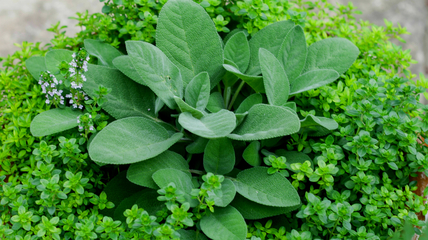
tel: 512 280-1192 wednesday, nov 26, 2014
Nursery Notes: Happy Thanksgiving everyone! See below for
an article celebrating the role of garden sage in the Thanksgiving
feast. / Please join us this Sunday, at 2 p.m. for a free lecture by
AmandaMoon: 'How to Decorate your House with Living Plants
for the Holiday Season.'
______________________________________________________ Cranberry Salsa muy picante Apologies for the cancellation of
Sgt. Pepper's class last Sunday. One of the recipes promised was
cranberry salsa. We found this one at a fascinating website where
artists illustrate their own culinary creations. A bag of cranberries,
and some cilantro, jalapenos, scallions, limes and sugar is all it
takes. They Draw They Cook
______________________________________________________
Staghorn Fern Party: 'With leaves shaped like deer antlers, the stag-
horn fern is one part plant, one part trophy art,' writes the Horticult.
Follow this link for a celebration of this amazing and strange plant,
and learn how to mount one against a structure. Platycerium
_____________________________________________________
Central Texas Gardener: Last Child in the Woods author Richard
Louv explains the importance of connecting kids to nature in our
digital world, and how to save them from 'nature deficit disorder.'
Sat., 4 p.m., Sun. 9 a.m. www.klru

 Visit the website:
Visit the website: